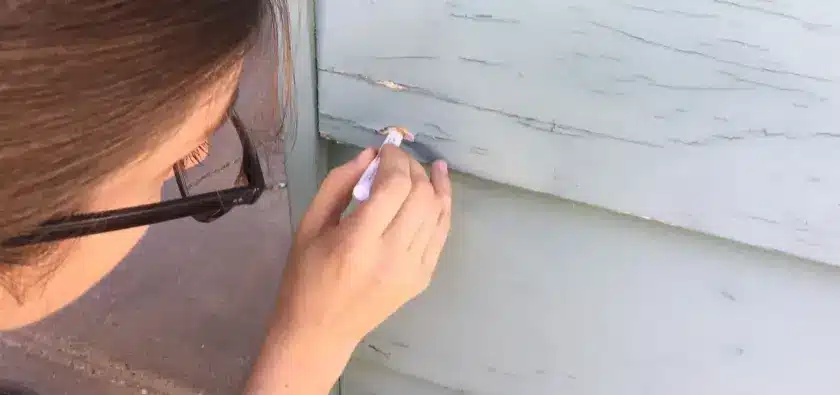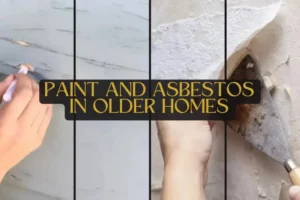Living in an older home offers a unique window into the past, allowing residents to immerse themselves in the architectural and historical essence of a bygone era. However, living in an old-construction home often comes with hidden challenges that modern homeowners must confront to ensure their dwellings are not only beautiful but safe to live in.
Among the most significant of these challenges are the potential presence of lead paint and asbestos—two hazardous materials commonly used in residential buildings before their health risks were fully recognized. Lead-based paint, prevalent in homes built before 1978, can deteriorate over time, releasing toxic lead dust into the environment. Similarly, asbestos, lauded for its fire-resistant properties, was widely used in insulation, tiling, and roofing materials until the late 20th century, when its carcinogenic effects became undeniable.
Identifying and mitigating the presence of these substances in older homes is crucial for protecting the health and well-being of their occupants. This article aims to guide homeowners through the process of recognizing and addressing the risks posed by lead paint and asbestos.
1. Understanding the Risks
The dangers of lead paint and asbestos are well-documented yet often misunderstood. Lead paint, when deteriorating, produces harmful dust and chips that can cause lead poisoning, particularly hazardous to children and pregnant women. Asbestos fibers, when airborne, can lead to severe lung conditions, including asbestosis, mesothelioma, and lung cancer. Recognizing these risks is the crucial first step toward safeguarding your home and health.
2. The Presence of Asbestos

Identifying asbestos in your home is a task that often requires expert knowledge. Asbestos was a common component in various building materials for its durability and fire resistance until its dangers became widely acknowledged. If your home was built or renovated before the 1980s, it might contain asbestos. Professional testing is the surest way to detect its presence. Websites like www.mesotheliomahope.com are invaluable resources, offering detailed information and support for dealing with asbestos-related health issues.
3. Identifying Lead Paint in Your Home

Homes constructed before 1978 are likely to contain lead-based paint. Signs of lead paint include peeling, chipping, or cracking surfaces. While home testing kits can provide initial indications, a certified inspector can offer a conclusive diagnosis. It’s imperative for homeowners to understand these signs and seek professional advice to manage lead paint safely and effectively.
4. Professional Testing and Assessment
For both lead paint and asbestos, professional testing and assessment are essential. Certified professionals can safely take samples of suspect materials and analyze them, minimizing the risk of exposure. This step is particularly vital for asbestos, as disturbing it can release dangerous fibers into your home’s air. Through professional assessment, homeowners can understand the extent of the issue and explore options for removal or mitigation.
5. Safe Removal and Mitigation Strategies
Dealing with lead paint and asbestos requires careful planning and, often, professional intervention. For lead paint, strategies might include encapsulation or careful removal following safety guidelines to prevent lead dust dispersal. Asbestos may need to be encapsulated or removed by specialists equipped with protective gear and approved techniques. It’s critical to follow local regulations and hire qualified professionals for these tasks to ensure the safety of your household.
6. DIY Precautions for Minor Repairs
While professional intervention is essential for significant asbestos and lead paint issues, homeowners may undertake minor repairs themselves with proper precautions. For lead paint, this includes using wet sanding techniques to minimize dust and wearing appropriate protective gear. For asbestos, minor undisturbed materials may be safely encapsulated with specialized products. However, it’s crucial to consult with professionals even for small projects to ensure safety measures are adequate.
7. Legal and Health Implications
Understanding the legal and health implications of managing lead paint and asbestos is crucial. Many jurisdictions require disclosure of these materials in real estate transactions, emphasizing the need for proper documentation of any assessments and remediation work. Moreover, improper handling can lead to significant health risks and potential legal liability, underlining the importance of following local regulations and guidelines for safe removal and disposal.
8. Choosing the Right Professionals
Selecting the right professionals for lead paint and asbestos mitigation is a critical decision. Look for licensed and certified contractors with a track record of safely handling hazardous materials. Request references and verify credentials to ensure you’re entrusting your home to reputable experts. This ensures that the remediation process will be handled safely and in compliance with regulatory standards.
9. Long-Term Maintenance and Monitoring
After addressing immediate hazards, long-term maintenance and monitoring are essential for keeping your home safe. Regular inspections can identify potential risks before they become serious problems. For homes with encapsulated asbestos or lead paint, monitoring the condition of these areas ensures that the materials remain undisturbed and safe. This proactive approach helps maintain a healthy living environment over time.
10. Educating Yourself and Your Community
Knowledge is a powerful tool in the fight against the dangers of lead paint and asbestos. Educating yourself about these risks, safe handling practices, and mitigation strategies can protect your family’s health. Furthermore, sharing this knowledge within your community can raise awareness and encourage others to take action, fostering a safer environment for everyone. Additionally, staying informed about local regulations and resources available for dealing with these hazards can provide the necessary support for effective prevention and remediation efforts.
Conclusion
The charm and character of older homes can be preserved without compromising on safety, but it requires a diligent approach to identifying and mitigating the risks of lead paint and asbestos. Understanding these hazards, engaging professionals for testing and remediation, and committing to long-term maintenance are key steps in protecting the health of all occupants. By educating ourselves and our communities about these risks and the importance of proper management, we can ensure that our cherished homes remain both safe and beautiful for generations to come. Safety in our living environments is not just a personal concern but a collective responsibility, and by taking informed action, we contribute to the well-being of our families and neighbors alike.
